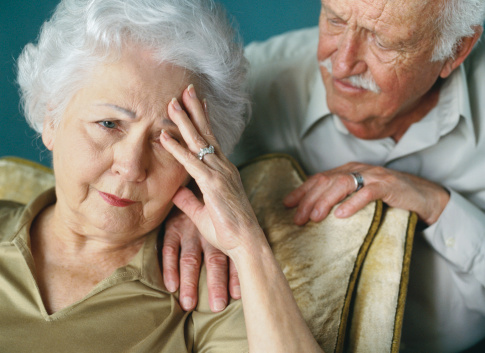 Holidays can be so joyful. They are full of celebration, beautiful décor, reunions with family and friends; not to mention the delicious variety of foods and gift-giving that comes along with them.
Holidays can be so joyful. They are full of celebration, beautiful décor, reunions with family and friends; not to mention the delicious variety of foods and gift-giving that comes along with them.
However, when the music stops, the family and friends go home, and it’s time to put those festive decorations away and go on a diet, depression can set in. A lot of people call February prime-time for the “winter blahs,” but most psychologists agree that by mid-January they are seeing full-blown signs of Seasonal Affective Disorder (SAD).
Advertisement
SAD is a type of depression that seems to occur at around the same time every year. For some people, signs of depression can begin as early as fall, but in many cases doctors see it in the post-holiday season. It’s estimated between four and six percent of Americans suffer from SAD, and it is far more common in women than it is in men.
RELATED READING: Study Suggests State Of Mind Affects Body’s Aging
Why SAD Happens
The medical community can’t say for certain what causes SAD, but there are some theories worth exploring. The Mayo Clinic says genetics, our body’s chemical make-up, as well as age, could play a role in whether or not we suffer from depression associated with a certain time of year.
The reduced level of sunlight in winter’s shorter days could disrupt the body’s internal clock, zapping some people of energy and leading to depression. Reduced sunlight can also lead to a drop in “feel good” serotonin levels which could cause depression. And when seasons change, our natural melatonin levels can fluctuate. Melatonin affects sleep, and studies have shown that a lack of sleep can cause mood disorders.
Psychiatrists from Loyola University Medical Center who specialize in treating depression say that the holiday focus on eating and drinking, combined with family stress, can leave people beginning the new year mentally and physically exhausted. Add to that, post-holiday can bring on winter’s deep-freeze temperatures. Severe cold makes some people more vulnerable to depression.
Common Symptoms Of SAD
When it comes to depression, people can experience a wide range of symptoms. SAD carries with it some common symptoms of which to be aware, including a lack of interest in people and regular activities, poor appetite, exhaustion and general sadness.
RELATED READING: Healthy Foods That Make You Happy
How To Beat Depression
Many illnesses may appear to be SAD, so if you are experiencing the symptoms, the best approach is to seek medical help. If you are diagnosed with SAD, there are a number of different approaches for treatment.
Advertisement
Bright lights have been known to impact brain chemistry and act as an antidepressant. Doctors recommend that you get outside in the winter months even if it is a little overcast. People are often surprised at how much difference just a little daylight makes in their mood.
Many SAD patients are treated with light therapy, including light boxes that have a set of special bulbs and a diffusing screen. These can be set up on a table where the person sits for a designated period of time. One of the latest techniques is a headband that holds mounted lights that can deliver light to your retina when you are inside or outside your home. In more extreme cases, doctors will prescribe anti-depressant medications.
Cultivate A Positive Outlook
There are post-holiday steps you can take to avoid being vulnerable to SAD. Psychologists suggest focusing on the positive, no matter how small those positives might be, such as a neighbor’s friendly greeting, a compliment from a friend or or receiving rebate money. Don’t dwell on the year past, but look to the future with its hope and possibilities. And take note of your goals and aspirations. Setting out to accomplish something you’ve always wanted to do, and mapping out a realistic strategy, can be a happiness bomb!
